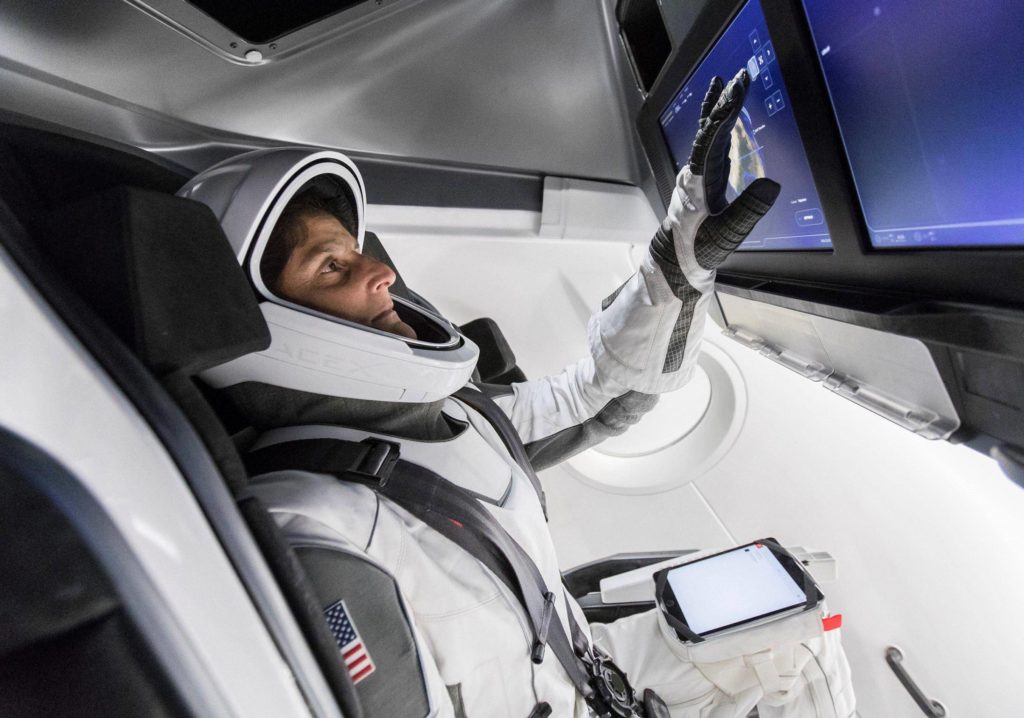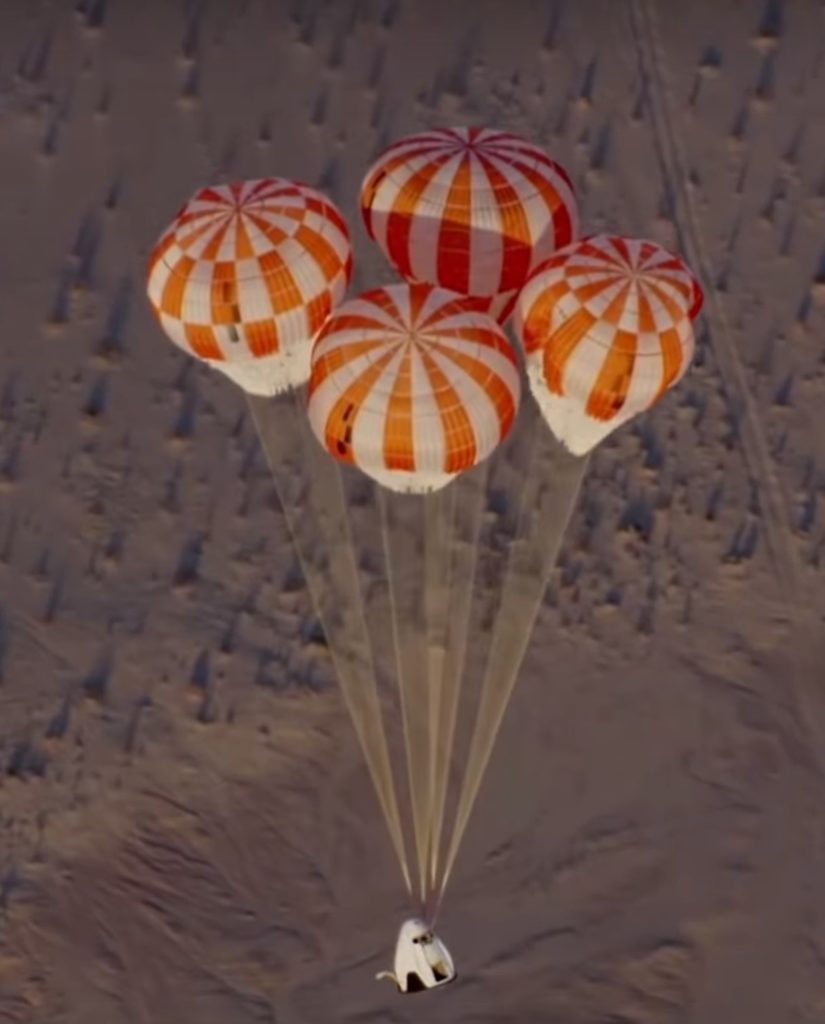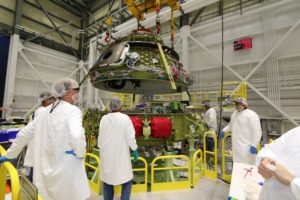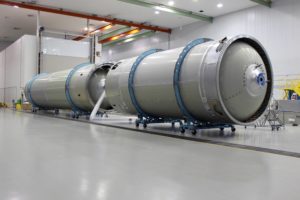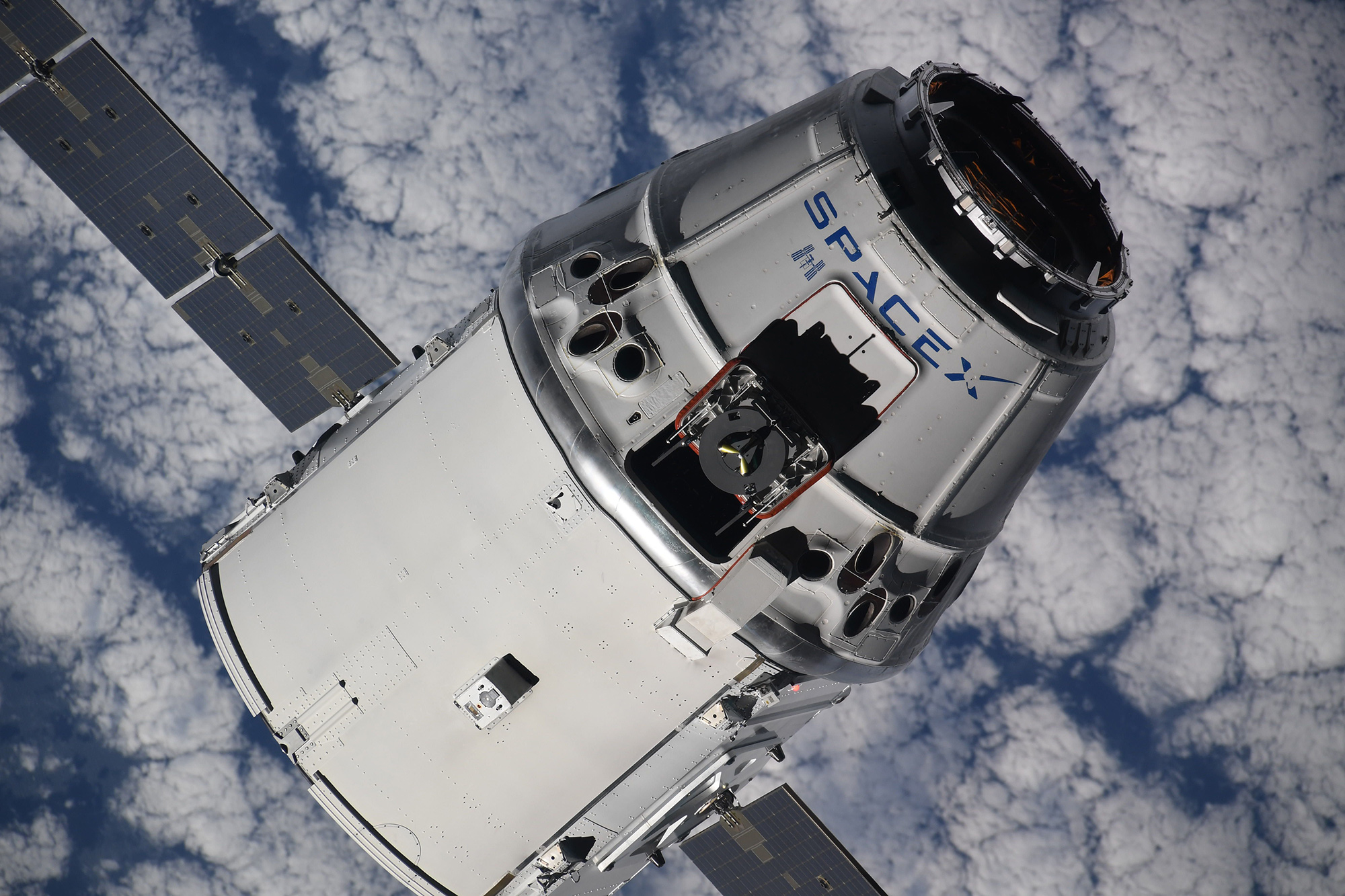

News
SpaceX’s Crew Dragon preps for debut as race to return astronauts to US craft nears final stages
After spending two weeks testing in a specialized NASA-run facility, SpaceX’s first flightworthy Crew Dragon spacecraft was shipped from Ohio to Florida, where it will now spend a number of months preparing for its first (uncrewed) launch into Earth orbit.
Known as Demonstration Mission 1 (DM-1), this critical milestone must be passed before the capsule will be certified to carry NASA astronauts to the International Space Station (ISS) sometime in 2019. While DM-1 will not sport a human crew, the spacecraft is nevertheless expected to demonstrate all life and mission-critical components, ranging from Crew Dragon’s complex array of avionics and ground/orbital communications equipment to craft’s ability to safely return passengers to Earth with a soft ocean landing.
SpaceX’s Crew Dragon spacecraft has been in the serious hardware development phase for approximately five years, although the concept itself dates back about as early as its Cargo Dragon predecessor – 2005 to 2006, publicly. Over the course of roughly two weeks of testing at NASA’s Plum Brook Station, Crew Dragon was likely subjected to a suite of environmental conditions the spacecraft will need to routinely survive to make it through initial launch and successfully operate under the rigors of microgravity and thermal vacuum conditions.
Crew Dragon arrived in Florida this week ahead of its first flight after completing thermal vacuum and acoustic testing at @NASA’s Plum Brook Station in Ohio. https://t.co/xXJE8TjcTr pic.twitter.com/lr0P95zzIK
— SpaceX (@SpaceX) July 12, 2018
Given the DM-1 capsule and trunk’s fairly quick jaunt at the huge Plum Brook vacuum chamber and equally quick arrival in Florida, those test results were likely quite favorable. Still, a major amount of work lies ahead before the first full Crew Dragon is ready for its launch atop Falcon 9. Most significantly, the craft’s trunk did not follow its fellow capsule to Florida, but rather returned to SpaceX’s Hawthorne, CA factory to be outfitted with critical flight hardware, particularly radiators and solar arrays. Once that outfit is complete, the module will also be shipped to Florida before being integrated with the DM-1 Crew Dragon capsule.
Of note, the DM-1 capsule has been constructed from the start to support a plan to use the vehicle in an in-flight abort test meant to ensure that the craft can wrest its passengers from harm’s way even at the most intense point of launch, where aerodynamic pressures are at their peak. In order to properly support both the DM-1 orbital mission and the in-flight abort test to follow, the capsule has been outfitted with a fair amount (hundreds of pounds) of hardware that will be unique to the pathfinder spacecraft. This understandably adds its own complexity to the already intense program’s first orbital mission, although it will hopefully not translate into additional delays.
- NASA Astronaut Suni Williams, fully suited in SpaceX’s spacesuit, interfaces with the display inside a mock-up of the Crew Dragon spacecraft in Hawthorne, California, during a testing exercise on April 3. (SpaceX)
- SpaceX’s Demo Mission-1 Crew Dragon seen preparing for vacuum tests at a NASA-run facility, June 2018. (SpaceX)
- Crew Dragon parachute tests are likely to continue into the summer to ensure NASA certification in time for DM-1. (SpaceX)
SpaceX competitor’s crewed spacecraft and rocket take shape
It’s worth noting that SpaceX is effectively operating at a distinct – albeit partially self-wrought – financial handicap when compared with Boeing’s Starliner spacecraft program, one of two vehicles funded by NASA to accomplish the same task of safely and reliably transporting astronauts to and from the ISS.
“NASA awarded firm-fixed-price contracts in 2014 to Boeing and Space Exploration Technologies Corporation (SpaceX) [of] up to $4.2 billion [for Boeing] and $2.6 billion [for SpaceX] for the development of crew transportation systems.” (GAO-18-476)
- Boeing’s DM-2 Starliner undergoes integration in Florida earlier this year. (Boeing)
- The ULA Atlas V rocket that will launch Boeing’s DM-1 Starliner spacecraft captured at ULA’s Decatur, AL factory, October 2017. (ULA)
- The United Launch Alliance (ULA) dual engine Centaur upper stage of the Atlas V rocket in the final stages of production and checkout, May 2018. (ULA)
In other words, Boeing requested and received a full 60% more than SpaceX to – quite literally – accomplish an identical task. Alongside the storied and brutally expensive history of crewed American spaceflight, both contracts are an absolute steal for two modernized, crew-capable spacecraft, but a 60% premium is a 60% premium. Foreseeable but slight cost overruns caused, among other things, by additional contractual requirements from NASA have followed a similar trend, roughly proportional to each company’s slice of the original $6.8b Commercial Crew contract.
“As of April 2018, NASA requirement changes had increased the value of contract line item 001 for Boeing by approximately $191 million and for SpaceX by approximately $91 million.” (GAO-18-476)
Still, Boeing’s progress towards its own DM-1 and DM-2 demo flights and a pad-abort test are impressive, although it very likely is more of a demonstration of a different approach to public communications than of any actual step up on SpaceX. In the last few weeks, Boeing has released a number of photos showing off the progress made building its own Starliner capsules and service modules (trunks), three of which are currently in varied states of assembly and integration in the company’s Florida-based facility. Additionally, United Launch Alliance CEO Tory Bruno has shared off-and-on updates and photos of the launch contractor’s own progress assembling the rockets that will launch Boeing’s spacecraft.
The two engine Centaur is getting ready and excited for #StarLiner. pic.twitter.com/WIf3H8k9yq
— Tory Bruno (@torybruno) July 2, 2018
Regardless, a huge amount of work lies ahead before both Boeing and SpaceX’s crewed spacecraft are able to conduct their first uncrewed and crewed launches into orbit. Now very outdated, NASA has stated several times recently that the presently available targets of NET August 31 will likely be updated later this month, pushing DM-1 debuts into NET Q4 2018 and the first commercial crewed demo missions to 2019.
Stay tuned, as the Block 5 Falcon 9 tasked with launching SpaceX’s own DM-1 Crew Dragon will likely be the next of a recent flood of finished rockets to leave the company’s Hawthorne factory, where it will head to McGregor, Texas to complete acceptance wet dress rehearsals and static fire tests before shipping to SpaceX’s Pad 39A in Florida.
Follow us for live updates, peeks behind the scenes, and photos from Teslarati’s East and West Coast photographers.
Teslarati – Instagram – Twitter
Tom Cross – Twitter
Pauline Acalin – Twitter
Eric Ralph – Twitter
News
Tesla launches in India with Model Y, showing pricing will be biggest challenge
Tesla finally got its Model Y launched in India, but it will surely come at a price for consumers.

Tesla has officially launched in India following years of delays, as it brought its Model Y to the market for the first time on Tuesday.
However, the launch showed that pricing is going to be its biggest challenge. The all-electric Model Y is priced significantly higher than in other major markets in which Tesla operates.
On Tuesday, Tesla’s Model Y went up for sale for 59,89,000 rupees for the Rear-Wheel Drive configuration, while the Long Range Rear-Wheel Drive was priced at 67,89,000.
This equates to $69,686 for the RWD and $78,994 for the Long Range RWD, a substantial markup compared to what these cars sell for in the United States.
🚨 Here’s the difference in price for the Tesla Model Y in the U.S. compared to India.
🚨 59,89,000 is $69,686
🚨 67,89,000 is $78,994 pic.twitter.com/7EUzyWLcED— TESLARATI (@Teslarati) July 15, 2025
Deliveries are currently scheduled for the third quarter, and it will be interesting to see how many units they can sell in the market at this price point.
The price includes tariffs and additional fees that are applied by the Indian government, which has aimed to work with foreign automakers to come to terms on lower duties that increase vehicle cost.
Tesla Model Y seen testing under wraps in India ahead of launch
There is a chance that these duties will be removed, which would create a more stable and affordable pricing model for Tesla in the future. President Trump and Indian Prime Minister Narendra Modi continue to iron out those details.
Maharashtra Chief Minister Devendra Fadnavis said to reporters outside the company’s new outlet in the region (via Reuters):
“In the future, we wish to see R&D and manufacturing done in India, and I am sure at an appropriate stage, Tesla will think about it.”
It appears to be eerily similar to the same “game of chicken” Tesla played with Indian government officials for the past few years. Tesla has always wanted to enter India, but was unable to do so due to these import duties.
India wanted Tesla to commit to building a Gigafactory in the country, but Tesla wanted to test demand first.
It seems this could be that demand test, and the duties are going to have a significant impact on what demand will actually be.
Elon Musk
Tesla ups Robotaxi fare price to another comical figure with service area expansion
Tesla upped its fare price for a Robotaxi ride from $4.20 to, you guessed it, $6.90.

Tesla has upped its fare price for the Robotaxi platform in Austin for the first time since its launch on June 22. The increase came on the same day that Tesla expanded its Service Area for the Robotaxi ride-hailing service, offering rides to a broader portion of the city.
The price is up from $4.20, a figure that many Tesla fans will find amusing, considering CEO Elon Musk has used that number, as well as ’69,’ as a light-hearted attempt at comedy over the past several years.
Musk confirmed yesterday that Tesla would up the price per ride from that $4.20 point to $6.90. Are we really surprised that is what the company decided on, as the expansion of the Service Area also took effect on Monday?
But the price is now a princely $6.90, as foretold in the prophecy 😂
— Elon Musk (@elonmusk) July 14, 2025
The Service Area expansion was also somewhat of a joke too, especially considering the shape of the new region where the driverless service can travel.
I wrote yesterday about how it might be funny, but in reality, it is more of a message to competitors that Tesla can expand in Austin wherever it wants at any time.
Tesla’s Robotaxi expansion wasn’t a joke, it was a warning to competitors
It was only a matter of time before the Robotaxi platform would subject riders to a higher, flat fee for a ride. This is primarily due to two reasons: the size of the access program is increasing, and, more importantly, the service area is expanding in size.
Tesla has already surpassed Waymo in Austin in terms of its service area, which is roughly five square miles larger. Waymo launched driverless rides to the public back in March, while Tesla’s just became available to a small group in June. Tesla has already expanded it, allowing new members to hail a ride from a driverless Model Y nearly every day.
The Robotaxi app is also becoming more robust as Tesla is adding new features with updates. It has already been updated on two occasions, with the most recent improvements being rolled out yesterday.
Tesla updates Robotaxi app with several big changes, including wider service area
News
Tesla Model Y and Model 3 dominate U.S. EV sales despite headwinds
Tesla’s two mainstream vehicles accounted for more than 40% of all EVs sold in the United States in Q2 2025.

Tesla’s Model Y and Model 3 remained the top-selling electric vehicles in the U.S. during Q2 2025, even as the broader EV market dipped 6.3% year-over-year.
The Model Y logged 86,120 units sold, followed by the Model 3 at 48,803. This means that Tesla’s two mainstream vehicles accounted for 43% of all EVs sold in the United States during the second quarter, as per data from Cox Automotive.
Tesla leads amid tax credit uncertainty and a tough first half
Tesla’s performance in Q2 is notable given a series of hurdles earlier in the year. The company temporarily paused Model Y deliveries in Q1 as it transitioned to the production of the new Model Y, and its retail presence was hit by protests and vandalism tied to political backlash against CEO Elon Musk. The fallout carried into Q2, yet Tesla’s two mass-market vehicles still outsold the next eight EVs combined.
Q2 marked just the third-ever YoY decline in quarterly EV sales, totaling 310,839 units. Electric vehicle sales, however, were still up 4.9% from Q1 and reached a record 607,089 units in the first half of 2025. Analysts also expect a surge in Q3 as buyers rush to qualify for federal EV tax credits before they expire on October 1, Cox Automotive noted in a post.
Legacy rivals gain ground, but Tesla holds its commanding lead
General Motors more than doubled its EV volume in the first half of 2025, selling over 78,000 units and boosting its EV market share to 12.9%. Chevrolet became the second-best-selling EV brand, pushing GM past Ford and Hyundai. Tesla, however, still retained a commanding 44.7% electric vehicle market share despite a 12% drop in in Q2 revenue, following a decline of almost 9% in Q1.
Incentives reached record highs in Q2, averaging 14.8% of transaction prices, roughly $8,500 per vehicle. As government support winds down, the used EV market is also gaining momentum, with over 100,000 used EVs sold in Q2.
Q2 2025 Kelley Blue Book EV Sales Report by Simon Alvarez on Scribd
-

 News3 days ago
News3 days agoTesla debuts hands-free Grok AI with update 2025.26: What you need to know
-

 Elon Musk1 week ago
Elon Musk1 week agoElon Musk confirms Grok 4 launch on July 9 with livestream event
-

 Elon Musk6 days ago
Elon Musk6 days agoxAI launches Grok 4 with new $300/month SuperGrok Heavy subscription
-

 News2 weeks ago
News2 weeks agoTesla Model 3 ranks as the safest new car in Europe for 2025, per Euro NCAP tests
-

 Elon Musk2 weeks ago
Elon Musk2 weeks agoxAI’s Memphis data center receives air permit despite community criticism
-

 News5 days ago
News5 days agoTesla begins Robotaxi certification push in Arizona: report
-

 Elon Musk2 weeks ago
Elon Musk2 weeks agoTesla reveals it is using AI to make factories more sustainable: here’s how
-

 Elon Musk2 weeks ago
Elon Musk2 weeks agoTesla scrambles after Musk sidekick exit, CEO takes over sales

